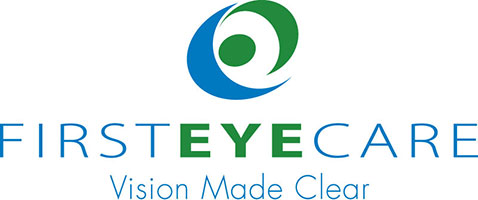Children Can’t Always Express Their Vision Issues
As children grow older, their bodies develop at rapid rates. In just months, they grow several inches and learn new skills while improving the skills they’ve already acquired. As their bodies develop, one area of development for them is their vision. A child’s vision is crucial to their overall development. It helps them complete everyday tasks, and it’s a vital part of their education. After all, nearly 80% of what children learn in school is taught visually. Without good vision, your child will not be able to learn as much as they need to. As they progress through school, there is more of a demand for their visual abilities than before.
From a young age, a child’s sight helps them hone specific skills. However, one in four children in school has vision issues. Furthermore, nearly a third of children have not received a comprehensive eye exam within the last two years, so many of these vision issues go undiagnosed. When a vision issue is not addressed, it can impact a child’s academic performance and overall development.
While it’s crucial to always have your child’s eyes examined regularly, as a parent, you must be on the lookout for any vision issues, as well. Many children cannot express the vision issues they are experiencing, or they simply do not know any different. You must be looking for any signs of vision issues in your children. If your child needs an eye exam, contact First Eye Care DFW today.
Signs of Vision Issues
Vision issues can begin at a young age, but it’s hard for young children, especially infants, to describe their issues. They often don’t know the difference between good vision and poor vision, which means you must keep an eye on your child’s vision habits. Pay attention to how they read, how they look at objects up close and far away, and much more. There are plenty of signs that imply your child may be struggling with vision issues. Some of these may include:
- Constant squinting
- Sitting too close to a TV
- Holding a book close to their face
- Constant eye rubbing
- Titling their eye when they look at something
- Closing or covering one eye to look at something
- Light sensitivity
- Using their finger to read
- Misaligned or crossed eyes
- Struggling to see the board at the front of the class
- Issues reading, reversing words
- Poor hand-eye coordination
If you start recognizing many of the symptoms, there is a high likelihood that your child may have vision issues. Contact First Eye Care DFW to schedule an eye exam for your child, so they can receive the vision correction they need.
Common Vision Issues
Vision problems are common in many young children. Several conditions plague children across the globe. With so many conditions, it’s crucial to have your child’s vision regularly examined by an eye care specialist. This ensures that any harmful conditions are caught before they impact your child’s life.
Some of these conditions include:
Amblyopia
Amblyopia, commonly referred to as lazy eye, is a common eye condition that affects many young children. It occurs when one of your child’s eye fails to reach normal visual acuity (sharpness of your vision), even with the help of corrective lenses like eyeglasses or contact lenses. Lazy eye begins in early childhood, typically affecting just one eye. However, there have been cases where both eyes have been affected.
Amblyopia is often the result of misaligned eyes, a condition known as strabismus. Fortunately, lazy eye can be fixed by fully correcting the refractive errors in both of your eyes. But you must seek treatment quickly once vision issues are recognized. If not corrected early, it can lead to vision loss, as your child’s brain will be programmed with the wrong vision signals.
Strabismus
We just mentioned strabismus. Strabismus is when the eyes are misaligned, also referred to as cross-eyed. It occurs when both eyes do not share proper alignment and do not work together to create clear vision. As we mentioned, if this condition is not treated quickly, it often results in the development of amblyopia.
When a child has strabismus, one or both of their eyes may turn in, turn out, or even turn down. Once it is caught early, your child will need to wear a patch, which forces the eye to correct itself. However, if the condition has progressed, surgery or special glasses may be needed.
Ptosis
When a child is born with ptosis, it is referred to as congenital ptosis. This condition occurs when the upper eyelid droops over the eye, either covering it slightly or completely, which blocks your child’s vision. Usually, this issue happens when there’s an issue with the muscle in charge of lifting the eyelid.
Children with ptosis often have to tilt their heads or look at things at an angle to see better. It can also cause other eye conditions, such as astigmatism and amblyopia.
Refractive Errors
There are several different kinds of refractive errors that can plague your child. Each impacts your child’s vision in one way or another. They often lead to blurred vision. Unlike the other conditions mentioned above, these aren’t as easy to recognize, so your child must have a comprehensive eye exam regularly. These conditions are:
- Myopia: also known as nearsightedness; close objects appear clear while far objects are blurry
- Hyperopia: also known as farsightedness; far objects appear clear while close objects are blurry
- Astigmatism: blurs vision in both close and far vision
If you recognize your child showcasing any of the signs listed above, bring them in for a comprehensive eye exam as soon as possible.
Treating Vision Issues
While some vision issues threaten the overall health of your child’s eye, some are far less severe and can be easily corrected. Glasses and contacts can do wonders for your child’s issues. There are many games you can play with your child that help hone your child’s visual and cognitive skills, which use puzzles, blocks, memory games, and more. Playing catch with your child can also help strengthen their hand-eye coordination, helping align their vision with their body movements. Reading with your child also allows you to easily recognize if your child has vision issues. Either read aloud and have them follow, or take turns reading.
Lastly, make sure your child regularly receives comprehensive eye exams. This is the best way to catch any vision issues early. Give First Eye Care DFW a call today to schedule your child’s next appointment.



